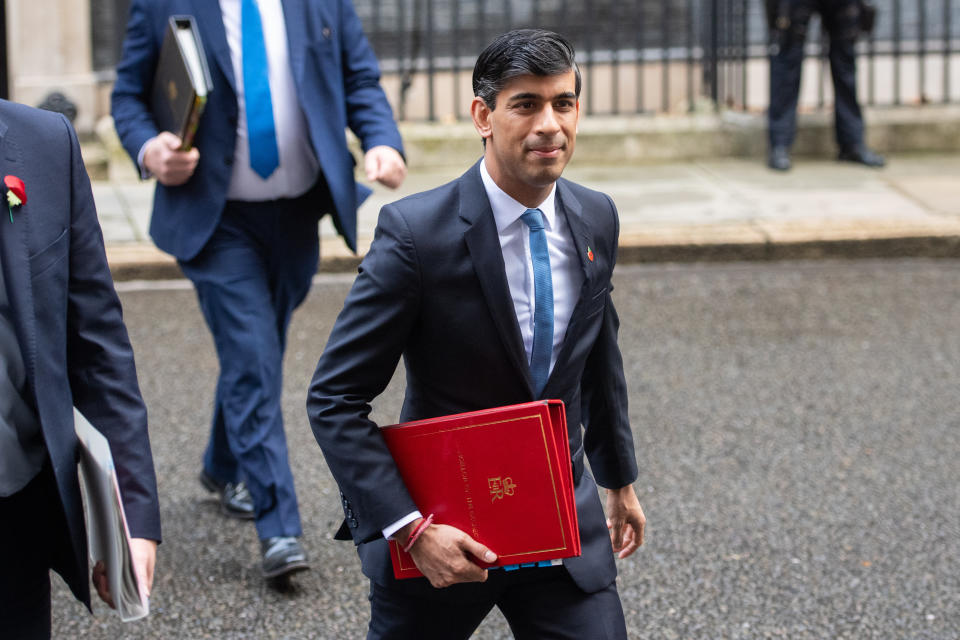UK government monthly borrowing at sixth-highest level since records began in 1993

UK government debt reached almost £2.1tn ($2.7tn) in October, as borrowing hit its sixth highest monthly total since records began.
Data published on Friday by the Office for National Statistics (ONS) underscores the pressure on Britain’s public finances from the coronavirus crisis.
Total debt now stands at 100.8% of the size of the entire UK economy, the highest ratio since the early 1960s.
Borrowing has jumped this year to plug the gap between soaring spending and lower tax receipts as the country has battled the pandemic and the economic impact of restrictions.
Chancellor Rishi Sunak said: “We’ve provided over £200 billions of support to protect the economy, lives and livelihoods from the significant and far-reaching impacts of coronavirus.
“This is the responsible thing to do, but it’s also clear that over time it’s right we ensure the public finances are put on a sustainable path.”
The government borrowed £22.3bn last month, compared to £35.4bn in September and lower than expected by analysts. But it still marked the highest October borrowing on record and the sixth highest monthly total since the ONS began collecting the data in 1993.
It comes after:
Tom Scholar, a senior Treasury civil servant, told MPs on Thursday national debt levels could hit 105% of GDP, and warned any future hike in interest rates was one of the biggest risks to the public finances.
The latest Treasury figures showed banks have made £42.2bn of fully government-guaranteed ‘Bounce Back’ loans to help firms through the crisis, with 61,000 more loans approved in October.
Prime minister Boris Johnson this week promised the biggest increase in defence spending since the Cold War, with £16.5bn over four years, as well as a £300m bailout for the crisis-hit sports sector. He declined to rule out cutting Britain’s aid budget on Thursday.
WATCH: UK prime minister sets out £16.5bn defence spending boost
The new figures will focus attention on next Wednesday’s spending review, where Sunak will set out the government’s departmental budgets for the year ahead. New Office for Budget Responsibility figures alongside his statement are expected to predict the worst GDP figures for 2020 in more than three centuries.
Sunak will signal the government is “making a start” on shoring up the public finances, according to allies quoted in the Financial Times. The chancellor has agreed with many experts and critics alike that tax hikes or spending cuts should wait until the current crisis has passed, however, as they risk suppressing growth.
Suren Thiru, chief economist at the British Chambers of Commerce, called the figures “eyewatering,” but warned: “The temptation to start fiscal tightening too early must be resisted to avoid prolonging the economic damage from COVID.
“Instead, the focus must be on boosting economic activity to sustainably grow the UK’s tax base.”
READ MORE: Bank of England announces another £150bn of government bond-buying
Michael Hewson, chief market analyst at CMC Markets UK, said in a recent note: “For now, markets aren’t overly concerned about [borrowing and debt levels] given the UK isn’t actually alone with respect to facing these problems.”
Government borrowing costs remain low, with the Bank of England creating money to buy up its debt. The bank announced another £150bn of government bond-buying earlier this month to “support the economy.”
ONS figures show interest payments last month cost £2bn, £4.4bn less than a year earlier.
Watch: Why can't governments just print more money?

 Yahoo Finance
Yahoo Finance 